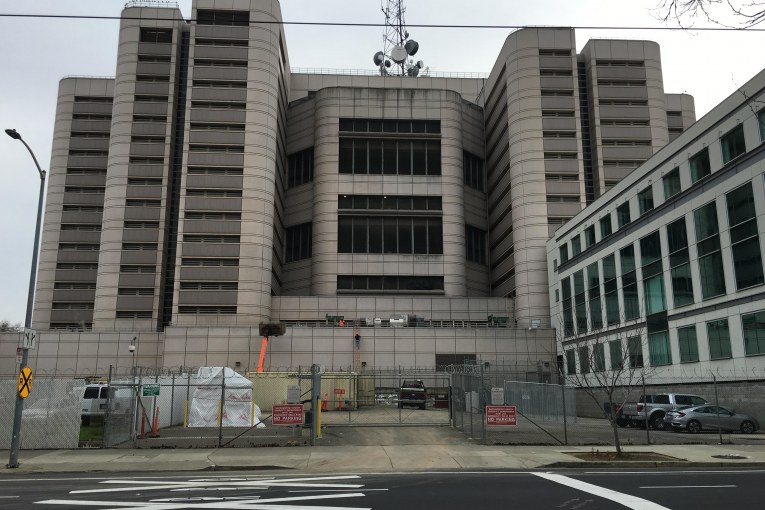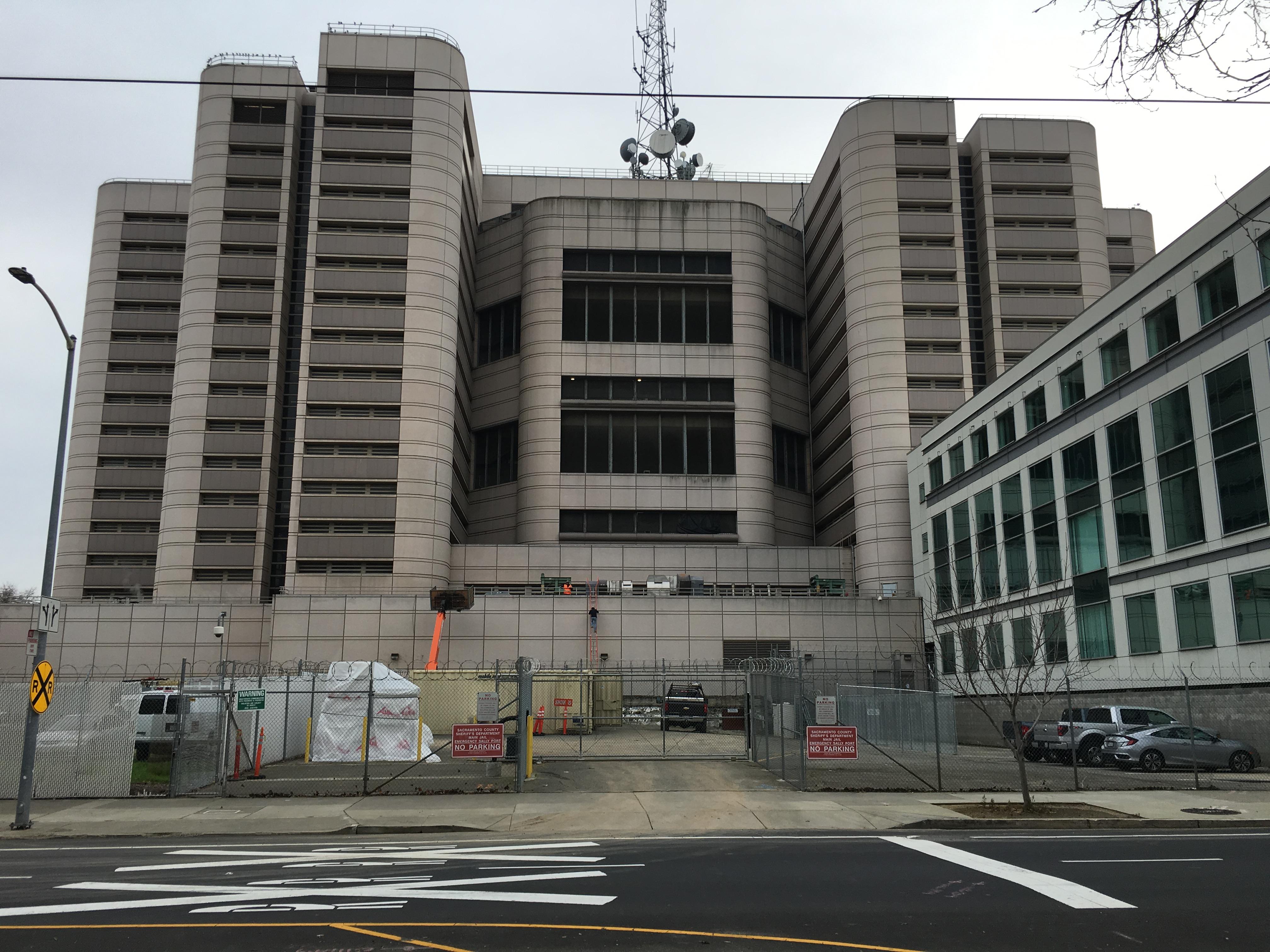
 By Crescenzo Vellucci
By Crescenzo Vellucci
Vanguard Sacramento Bureau Chief
SACRAMENTO – Is COVID-19 lurking inside Sacramento County’s two jails? County officials say no, but former and current inmates suggest something else.
Those incarcerated in the jails here have confided to THE VANGUARD that inmates are suffering from fever, cough and other classic symptoms of COVID-19 – and have been for months – but are not being tested for the virus, only given Tylenol and otherwise forgotten.
California corrections officials announced Sunday the first prison inmate death from complications related to COVID-19 – but the fear that county jails and state prisons could become super hot spots as they have in other parts of the U.S. has caused more than 1,000 inmates to be released early or on zero bail in Sacramento jails.
Despite’s Sacramento’s move last month to reduce the jail population to allow social distancing in the jails, at least some inmates are speaking out here about what conditions are really like for the incarcerated population.
Inmates, in candid conversations with THE VANGUARD, described grim conditions inside Sacramento’s two jail facilities for those why may have or have had COVID-19.
Prisoners said they’ve seen inmates who “collapse” in chow lines because of the illness – some never return.
“It’s real ugly here. I’ve seen folks collapse, falling down with fever in the chow lines. They’re just carried off, some return and some don’t,” said Frederick Garner, an inmate awaiting trial and now housed at RCCC (Rio Cosumnes Correction Center).
Garner said when people come back, they’re “still coughing all over us.”
“I came down with something. Fever, cough, it hurt to take a breath, joints hurt so bad I couldn’t walk…and they just gave me a couple of Tylenol and an allergy pill a day – I had to buy more through our commissary,” said Garner, 50, who has underlying conditions of high blood pressure, irregular heartbeat and diabetes.
“Anyone who mentions the virus to the guards is ignored. Sometimes they quarantine people, but they push them right back here after a little while,” said Garner, who is facing marijuana sales and  domestic violence charges – his wife recanted and said she was the aggressor, but the court wouldn’t release him from his $625,000 bail.
domestic violence charges – his wife recanted and said she was the aggressor, but the court wouldn’t release him from his $625,000 bail.
Garner said inmates on keenly aware of COVID-19 but “try to stay positive. We’re very, very concerned. We talk about it, but try to keep it light.”
He did say that “eventually” inmates get to see a nurse, but even that is questionable.
“I have very high blood pressure, even with my meds. Like, if it’s 190 over something, and that’s real high, they have me raise my arm above the machine and it brings the BP back down to 140, and then they say I’m OK,” he said.
What precautions is the jail taking to prevent COVID-19 from taking hold?
“There’s fewer of us now, so we have more room. But social distancing? Ain’t no way to do it,” said Garner, describing the jail as a “petri dish.”
“We try to stay apart but when we’re transported on the bus to court, we’re handcuffed together and stuffed into a holding cell,” said the father of five, and grandfather of six.
When defendants go into court it’s noticeable – hearings are done via the streaming service Zoom now – that no prisoners have masks, although deputies and defense counsel wear masks.
“They’ve never offered us masks,” said Garner.
Even attempts to sterilize the jail cause health problems, he related.
“Every night about midnight they come in, wearing masks, and spray disinfectant, fumigate our stuff…but then we can’t breathe, we don’t have masks. We’re all complaining about raw, sore throats,” said Garner.
Garner said he has some sympathy for guards, too.
“I see them. They’re young and in good shape. But then I see them later and they have circles under their eyes and don’t look well,” he said. Some guards wear masks, and some don’t, Garner said, who wonders if guards don’t want to know if COVID-19 is in the jail because then they’d be quarantined away from their families.
Michelle Spaulding, Garner’s private defense counsel, called the jail conditions a “horror for the sick inmates, like Mr. Garner, who are trapped in there, not able to get out and get proper treatment. It’s unimaginable.”
“If this is true, then it was happening at a time we were being told the jail was a safe and sanitary place to visit our clients. Perhaps they thought the precautions they were taking were sufficient, but what if they were wrong,” asked Spaulding.
“Not to let people choose whether to potentially be exposed to the virus takes away a fundamental right. How many people were exposed as a result of this? Inmates get released; guards go home. How many people did they then come into contact with,” Spaulding added.
Another prisoner, released at the end of last week from the downtown mail jail, said he got sick in February, for nearly three weeks. And he wasn’t the only one, he said.
“I had a fever, high heart rate, the worst headache of my life, couldn’t smell or taste. They wouldn’t test me for the virus, but something bad was going around,” he said, adding that older incarcerated were “falling down,” and that it seemed guards were getting sick.
“We had restrictions, they brought meals to us, there was hand sanitizer in the dayroom. But the mood was really depressing. Of course, we knew about the virus,” he said, and claims that tension has led to “a lot more fights.”
To sign up for our new newsletter – Everyday Injustice – https://tinyurl.com/yyultcf9






Testing should be the mandatory and standard practice in any confined population, whether voluntary as in the military or skilled nursing facilities or involuntary in the case of the incarcerated. It should also be mandatory for all those who care for, supply, consult with or guard such individuals. That is what an adequate testing protocol would look like.
Anything less is an invitation to spread the virus through the contained population and the community at large from those that are intermediaries between the two groups.
https://nypost.com/2020/04/19/dozens-of-nyc-inmates-back-in-jail-after-coronavirus-release/
So nearly 97 percent haven’t been re-arrested
So far, but tell that to the 50 people who were robbed or accosted by these released prisoners.
What do you feel is an acceptable number?
I don’t think putting numbers on it is an acceptable to assess the issue – you have a number of competing concerns – safety of the incarcerated population in a jail where there were at last report over 700 cases, safety of the overall community, the overall propriety of holding people in custody over bail, pretrial custody questions in general considering the presumption of innocence, the fact that people who are incarcerated pretrial are more likely to take less advantageous plea agreements, lose their jobs, their homes, their families. How do you take all of that and spit out a random number?
Keith
I agree with you that there is a chance that some criminals will repeat crimes if released. I also see another danger, however. That is the unintentional transmission of the virus in the general population perhaps not from a criminal but perhaps a guard, a lawyer, a nurse, or psychologist all of whom are in close proximity to prisoners. Am I really better off if I don’t have my TV stolen, but end up dying from an unsuspecting transmission of the coronavirus? This is an exceptional time when unusual circumstances must be weighed in this very complex issue.
One of the points Janos Marton, who is running for DA in NY made, is how many of those people were going to be released anyway? After all, if they are going to be released in six months anyway, is that extra time really going to change the outcome that much? But that extra time at Rikers could expose them to a fatal disease.
Wonder how that %-age compares to recidivism for those who serve full terms… many of whom are accused of/committed crimes greater than those being released currently… I just don’t know those #’s…
“A U.S. Sentencing Commission report on recidivism among federal prisoners, released on January 24, 2019, showed that nearly 64% of prisoners who had been convicted of violent offenses were arrested within eight years compared with about 40% of those convicted of nonviolent offenses.”
Also not counted in those numbers, how many more besides the 50 that got caught have committed crimes and not been caught? So that 50 out of 1400 you know is much higher.
This guy waited 40 whole minutes after he was released to commit another crime.
Then there’s this guy out setting fires, what could go wrong there with the temps starting to heat up?
It makes you wonder how much people would be advocating for the release of criminals if they themselves were the ones getting victimized.
And once again, remember these are only the released prisoners that are getting caught doing crimes. What’s the true number?
Why don’t you also cite the people who were released and didn’t commit crimes?
Because it only takes one released convict out starting fires to create a catastrophe.
Also, if 10 convicts are released and 9 didn’t commit another crime but the 10th one killed someone would you consider that a success?
I don’t know, but as I said yesterday, you need a more balanced assessment than you’re offering right now.
And so do you. How is your assessment balanced? As you just said, you don’t know. Why don’t you know? Maybe because you don’t want to answer the question.
What is my assessment?
What, you don’t know?
I wasn’t aware I offered one
Okay, so enlighten me. You seem to know my assessment, so what’s your’s?
But your responses here give a good clue of what your assessment is.
If you release people from jail – some are going to commit crimes. That doesn’t mean you don’t do it. I do think you should attempt to minimize the risk on a case by case basis. But in the end, it’s going to happen. But guess what? Most of the people released are going to be released at some point anyway and it’s not clear to me that holding them for an extra amount of time will lower that risk. But as the blurb I posted shows, holding them for an extra month could expose them to COVID and lead to their deaths.
But if you start cherry picking all the bad cases, you end up with a skewed sample. The example I like to give is Willie Horton. He never should have been released. He was. Unfortunately the solution to that mistake was they killed a program that by all accounts worked extremely well at helping people adjust to eventual release and had a very low percentage of recidivism compared to the average release (that was going to happen anyway). So they killed a program that worked over a mistake and an outlier. That’s bad public policy.
ABC reports: “ After 44 years in prison, man dies of the coronavirus 24 days before release: William Garrison was in prison for 44 years for a killing committed during a home invasion when he was 16. The 60-year-old was finally preparing for release from prison in Michigan when he contracted the novel coronavirus. He died 24 days before his scheduled release date. ”